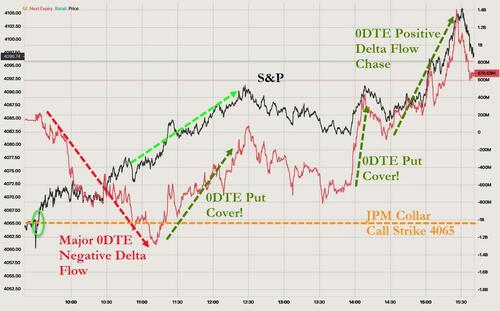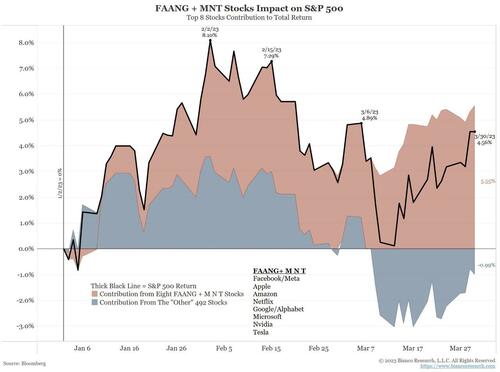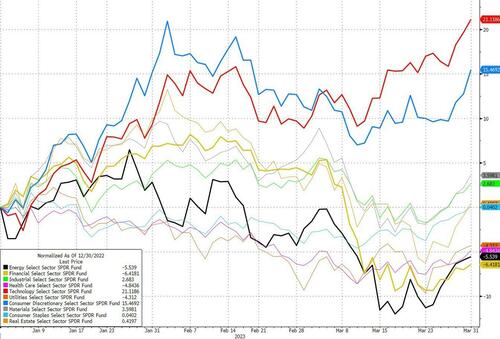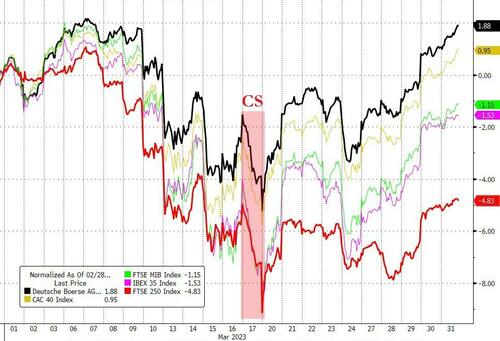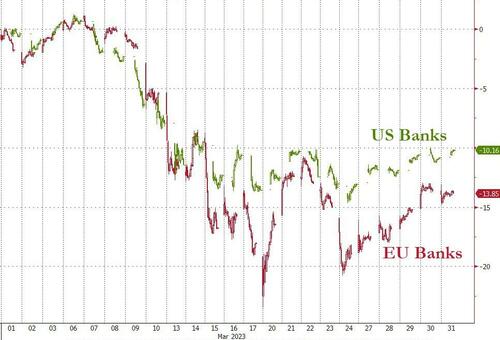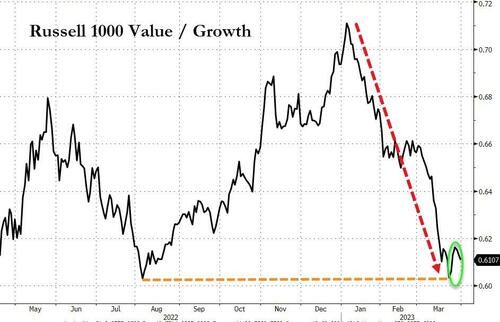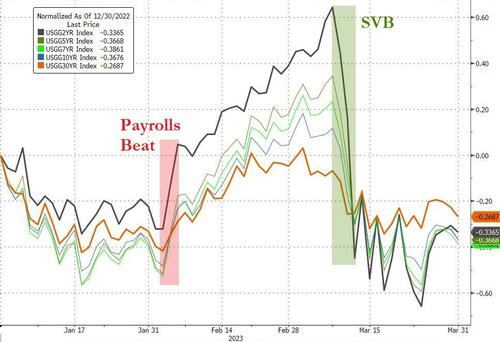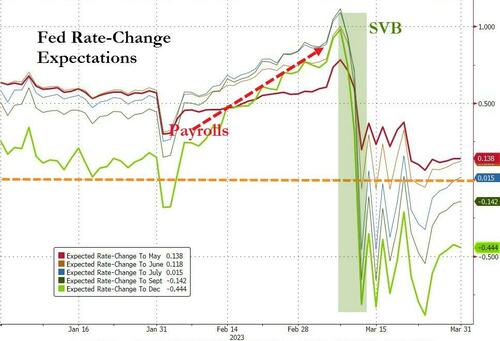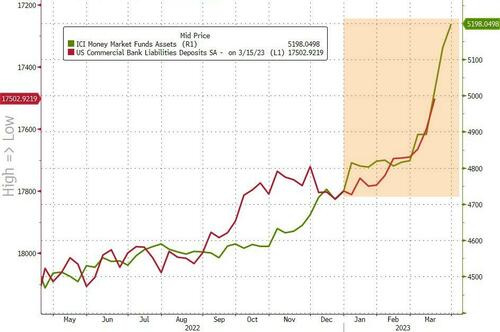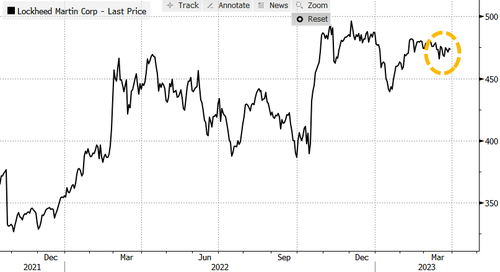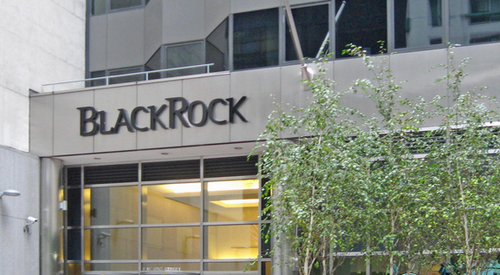Authored by Thomas Fazi via UnHerd.com,
We all lose from the global war on farmers...
France is in flames. Israel is erupting. America is facing a second January 6.
In the Netherlands, however, the political establishment is reeling from an entirely different type of protest — one that, perhaps more than any other raging today, threatens to destabilise the global order.

The victory of the Farmer-Citizen Movement (BBB) in the recent provincial elections represents an extraordinary result for an anti-establishment party that was formed just over three years ago. But then again, these are not ordinary times.
The BBB grew out of the mass demonstrations against the Dutch government’s proposal to cut nitrogen emissions by 50% in the country’s farming sector by 2030 — a target designed to comply with the European Union’s emission-reduction rules. While large farming companies have the means to meet these goals — by using less nitrogen fertiliser and reducing the number of their livestock — smaller, often family-owned farms would be forced to sell or shutter. Indeed, according to a heavily redacted European Commission document, this is precisely the strategy’s goal: “extensifying agriculture, notably through buying out or terminating farms, with the aim of reducing livestock”; this would “first be on a voluntary basis, but mandatory buyout is not excluded if necessary”.
It is no surprise, then, that the plans sparked massive protests by farmers, who see it as a direct attack on their livelihoods, or that the BBB’s slogan — “No Farms, No Food” — clearly resonated with voters. But aside from concerns about the impact of the measure on the country’s food security, and on a centuries-old rural way of life integral to Dutch national identity, the rationale behind this drastic measure is also questionable. Agriculture currently accounts for almost half of the country’s output of carbon dioxide, yet the Netherlands is responsible for less than 0.4% of the world’s emissions. No wonder many Dutch fail to see how such negligible returns justify the complete overhaul of the country’s farming sector, which is already considered one of the most sustainable in the world: over the past two decades, water dependence for key crops has been reduced by as much as 90%, and the use of chemical pesticides in greenhouses has been almost completely eliminated.
Farmers also point out that the consequences of the nitrogen cut would extend well beyond the Netherlands. The country, after all, is Europe’s largest exporter of meat and the second-largest agricultural exporter in the world, just behind the United States — in other words, the plan would cause food exports to collapse at a time when the world is already facing a food and resource shortage. We already know what this might look like. A similar ban on nitrogen fertiliser was conducted in Sri Lanka last year, with disastrous consequences: it caused an artificial food shortage that plunged nearly two million Sri Lankans into poverty, leading to an uprising that toppled the government.
Given the irrational nature of the policy, many protesting farmers believe it can’t simply be blamed on the urbanite “green elites” currently running the Dutch government. They suggest one of the underlying reasons for the move is to squeeze small farmers from the market, allowing them to be bought out by multinational agribusiness giants who recognise the immense value of the country’s land — not only is it highly fertile, but it is also strategically located with easy access to the north Atlantic coast (Rotterdam is the largest port in Europe). They also point out that prime minister Rutte is an Agenda Contributor of the World Economic Forum, which is well known for being corporate-driven, while his finance minister and Minister of Social Affairs and Employment are also tied to the body.
The struggle playing out in the Netherlands would seem to be part of a much bigger game that seeks to “reset” the international food system. Similar measures are currently being introduced or considered in several other European countries, including Belgium, Germany, Ireland and Britain (where the Government is encouraging traditional farmers to leave the industry to free up land for new “sustainable” farmers). As the second-largest contributor to greenhouse gas emissions, after the energy sector, agriculture has naturally ended up in the crosshairs of Net Zero advocates — that is, virtually all major international and global organisations. The solution, we are told, is “sustainable agriculture” — one of the UN’s 17 Sustainable Development Goals (SDGs), which form their “Agenda 2030”.
This issue has now been pushed to the top of the global agenda. Last November’s G20 meeting in Bali called for “an accelerated transformation towards sustainable and resilient agriculture and food systems and supply chains” to “ensure that food systems better contribute to adaptation and mitigation to climate change”. Just a few days later, in Egypt, the COP27 annual Green Agenda Climate Summit launched its initiative aimed at promoting “a shift towards sustainable, climate-resilient, healthy diets”. Within a year, its Food and Agriculture Organization aims to launch a “roadmap” for reducing greenhouse emissions in the agricultural sector.
The endgame is hinted at in several other UN documents: reducing nitrogen use and global livestock production, lowering meat consumption, and promoting more “sustainable” sources of protein, such as plant-based or lab-grown products, and even insects. The United Nations Environment Programme, for example, has stated that global meat and dairy consumption must be reduced by 50% by 2050. Other international and multilateral organisation have presented their own plans for transforming the global food system. The EU’s Farm to Fork strategy “aims to accelerate our transition to a sustainable food system”. Meanwhile, the World Bank, in its climate change action plan for 2021-2025, says that 35% of the bank’s total funding during this period will be devoted to transforming agriculture and other key systems to deal with climate change.
Alongside these intergovernmental and multilateral bodies, a vast network of “stakeholders” is now devoted to the “greening” of agriculture and food production — private foundations, public-private partnerships, NGOs and corporations. Reset the Table, a 2020 Rockefeller Foundation report, called for moving away from a “focus on maximising shareholder returns” to “a more equitable system focused on fair returns and benefits to all stakeholders”. This may sound like a good idea, until one considers that “stakeholder capitalism” is a concept heavily promoted by the World Economic Forum, which represents the interests of the largest and most powerful corporations on the planet.
The Rockefeller Foundation has very close ties to the WEF, which is itself encouraging farmers to embrace “climate-smart” methods in order to make the “transition to net-zero, nature-positive food systems by 2030”. The WEF is also a big believer in the need to drastically reduce cattle farming and meat consumption and switch to “alternative proteins”.
Arguably the most influential public-private organisation specifically “dedicated to transforming our global food system” is the EAT-Lancet Commission, which is largely modelled around the Davos “multistakeholderist” approach. This is based on the premise that global policymaking should be shaped by a wide range of unelected “stakeholders”, such as academic institutions and multinational corporations, working hand-in-glove with governments. This network, cofounded by the Wellcome Trust, consists of UN agencies, world-leading universities, and corporations such as Google and Nestlé. EAT’s founder and president, Gunhild Stordalen, a Norwegian philanthropist who is married to one of the country’s richest men, has described her intention to organise a “Davos for food”.
EAT’s work was initially supported by the World Health Organization, but in 2019 the WHO withdrew its endorsement after Gian Lorenzo Cornado, Italy’s ambassador and permanent representative to the UN in Geneva, questioned the scientific basis for the dietary regime being pushed by EAT — which is focused on promoting plant-based foods and excluding meat and other animal-based foods. Cornado argued that “a standard diet for the whole planet” that ignores age, sex, health and eating habits “has no scientific justification at all” and “would mean the destruction of millenary healthy traditional diets which are a full part of the cultural heritage and social harmony in many nations”.
Perhaps more important, said Cornado, is the fact that the dietary regime advised by the commission “is also nutritionally deficient and therefore dangerous to human health” and “would certainly lead to economic depression, especially in developing countries”. He also raised concerns that “the total or nearly total elimination of foods of animal origin” would destroy cattle farming and many other activities related to the production of meat and dairy products. Despite these concerns, raised by a leading member of the world’s top public health body and shared by a network representing 200 million small-scale farmers in 81 countries, EAT continues to play a central role in the global push for the radical transformation of food systems. At the 2021 United Nations Food Systems Summit, which originated from a partnership between the WEF and the UN Secretary-General, Stordalen was given a leading role.
This complete blurring of the boundaries between the public and the private-corporate spheres in the agricultural and food sectors is also happening in other areas — with Bill Gates standing somewhere in the middle. Alongside healthcare, agriculture is the main focus of the Bill and Melinda Gates Foundation, which finances several initiatives whose stated aim is to increase food security and promote sustainable farming, such as Gates Ag One, CGIAR and the Alliance for a Green Revolution in Africa. Civil society organisations, however, have accused the Foundation of using its influence to promote multinational corporate interests in the Global South and to push for ineffective (but very profitable) high-tech solutions which have largely failed to increase global food production. Nor are Gates’s “sustainable” agricultural activities limited to developing countries. As well as investing in plant-based protein companies, such as Beyond Meat and Impossible Foods, Gates has been buying huge amounts of farmland in the US, to the point of becoming the biggest private owner of farmland in the country.
The problem with the globalist trend he embodies is obvious: ultimately, small and medium-scale farming is more sustainable than large-scale industrial farming, as it is typically associated with greater biodiversity and the protection of landscape features. Small farms also provide a whole range of other public goods: they help to maintain lively rural and remote areas, preserve regional identities, and offer employment in regions with fewer job opportunities. But most importantly, small farms feed the world. A 2017 study found that the “peasant food web” — the diverse network of small-scale producers disconnected from Big Agriculture — feeds more than half of the world’s population using only 25% of the world’s agricultural resources.
Traditional farming, though, is suffering an unprecedented attack. Small and medium-scale farmers are being subjected to social and economic conditions in which they simply cannot survive. Peasant farms are disappearing at an alarming rate across Europe and other regions, to the benefit of the world’s food oligarchs — and all this is being done in the name of sustainability. At a time when almost a billion people around the world are still affected by hunger, the lesson of the Dutch farmers could not be more urgent, or inspiring. For now, at least, there is still time to resist the Great Food Reset.











